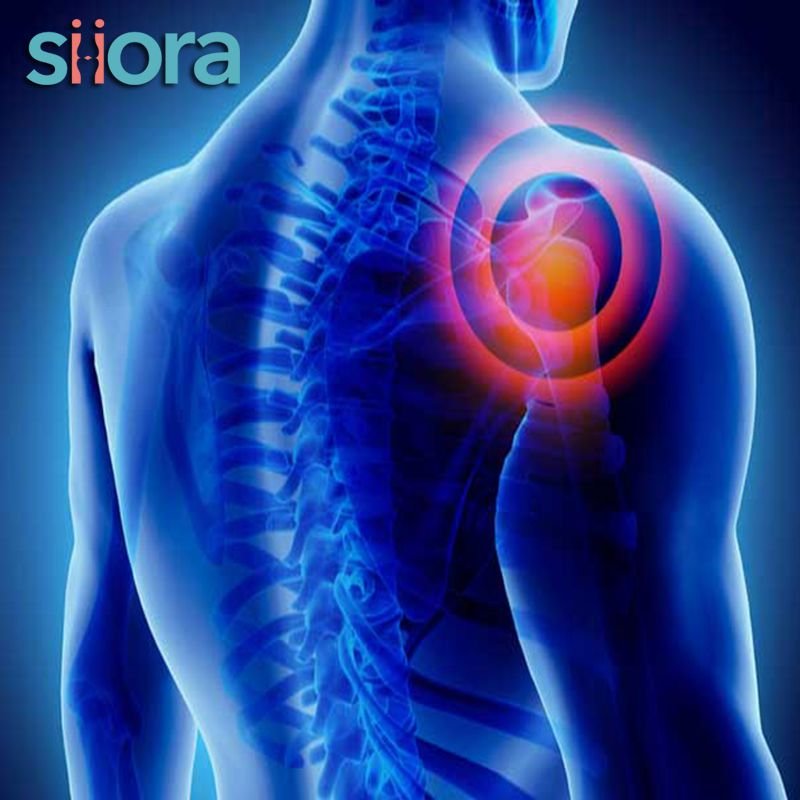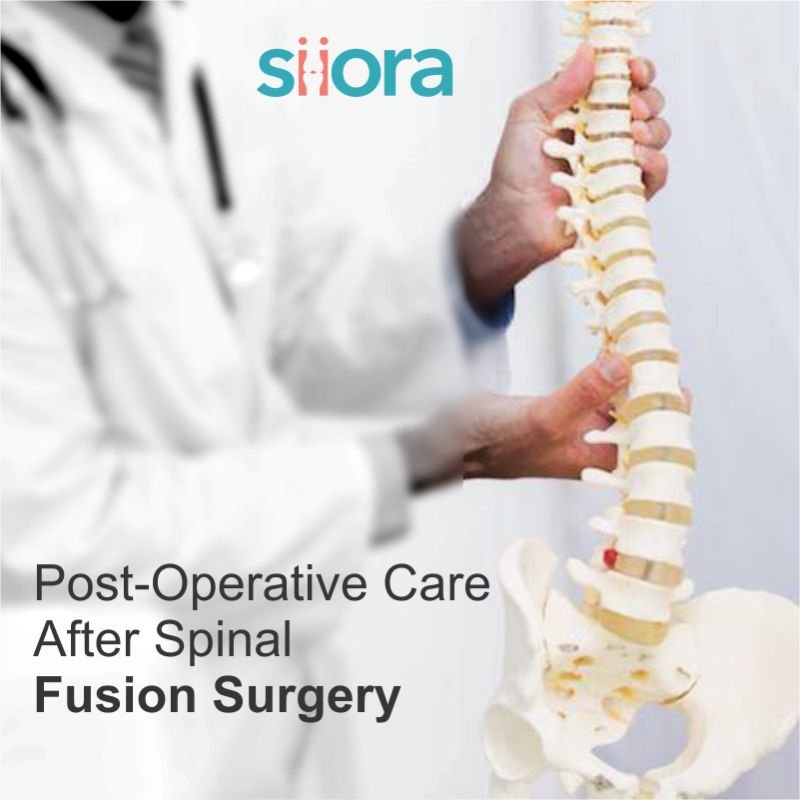What are Shoulder Fractures?
Shoulder fractures are when there is a break in the humerus, especially the topmost part, or the glenoid in the shoulder joint. The shoulder joint is one of the largest in our body and it helps perform various upper-body movements, especially the ones involving the arms.
Three bones form our shoulder joint including the clavicle, humeral head, and scapula. Two joints make up our shoulders namely the acromioclavicular joint and the glenohumeral joint. Let us take a deep look at both these joints:
Acromioclavicular Joint
The acromioclavicular joint (AC Joint) is at the top of the shoulder. Acromion (a part of the scapula) and the clavicle forms this joint.
Glenohumeral Joint
The glenohumeral joint is formed by the glenoid fossa and the humeral head. It is a type of synovial ball and socket joint.
Now, shoulder fracture is any break occurring at these joints or the bones forming them. Depending on the location of the break, shoulder fractures are classified into 3 types.

What Are Different Types of Shoulder Fractures?
As now you know that three bones form the shoulder joint, hence, the location of the break defines the type of shoulder fracture. Here are the three types you should know:
Clavicle Fracture
The clavicle (collarbone) is a long bone in our shoulder. It starts from the base of the neck and extends to the shoulder. A break occurring in this bone is known as a clavicle fracture. Trauma like motor vehicle accidents falls, a direct hit on the shoulder or contact sports injuries may cause clavicle fractures.
Proximal Humerus Fracture
The humerus is a long bone that connects the shoulder to the head and runs through the elbow. Thus, a proximal humerus fracture is a condition in which the break occurs in the head part of the bone. This part connects to the shoulder and hence, is counted under the category of shoulder fractures. Trauma is also the cause of proximal humerus fractures that include car/bike accidents, falling on the shoulder, collisions between players, and a direct hit from a solid & heavy object.
The humeral head is known as “the ball” of the shoulder joint which rests in “the socket” known as the glenoid, a part of the scapula.
Scapula Fracture
A scapula is a triangular-shaped bone that is present at the back of the shoulder. It connects the proximal humerus to its glenoid process to form the shoulder joint. When compared to the other two types of shoulder fractures, scapula fractures are rare. Around 3-5% of all shoulder fractures are scapular fractures. Contact sports injuries and traumatic events like automobile accidents are a few of the common causes of scapula fractures.
What Causes Shoulder Fractures?
By now, you must have become acquainted with the different types of shoulder fractures. Here, we will now see some of the possible causes of breaks in the shoulder joint.
Traumatic events like high-energy automobile accidents are among the commonest causes of shoulder fractures. Most adults experience shoulder injuries because of motor vehicle accidents only.
Besides this, athletes can also not hide from fractures in their shoulders. As a result, the condition is also commonly reported in sportspeople, especially those engaged in contact sports. Those who play football, and other such sports are at the highest risk of scapula fractures. While on the other hand, athletes who play hockey are more prone to clavicle fractures.
Falling on the shoulder can also cause a break and the direction of the fall will decide which part of the shoulder will break.
Above all, when your shoulder gets directly hit by a solid and heavy object, a fracture is likely in such cases as well. However, the severity of the fracture depends on the type and weight of the object.
The type of shoulder fracture depends on its cause and the treatment depends accordingly.
What Are the Symptoms of Shoulder Fractures?
Fractures are painful and the same is the case with shoulder fractures. Intense pain in the affected shoulder is the commonest symptom of shoulder fracture. When this occurs, the affected person finds it difficult to move the injured arm. A broken bone in the shoulder also results in swelling and bruising around the joint. Here are some of the common signs and symptoms a person may experience after a shoulder fracture:
- Painful movement of the injured shoulder
- Swelling and bruising around the shoulder
- Tenderness to touch
- Bump at the fracture site, especially in the clavicle fractures
- Discoloration around the upper arm
What is the Diagnosis of Shoulder Fractures?
The diagnosis of fractures in the shoulder joint requires a thorough physical examination followed by imaging tests.
During the physical examination, the healthcare service provider will carefully examine the injured area and look for visible signs. He will examine the location of the swelling, bump if there, bruising, and range of motion. For this, the orthopedic specialist may ask the patient to move his/her arm in different directions.
Specific findings for different types of shoulder fractures may include:
Proximal Humerus Fracture
In such cases, the healthcare service provider will find a severely swollen shoulder. The patient will be in extreme pain with very limited shoulder mobility.
Clavicle Fracture
During the diagnosis of clavicle fracture, the orthopedic specialist will find swelling around the middle portion of the collarbone area. Along with this, there will be a bump on the shoulder as well.
Scapular Fractures
In scapular fractures, there will be bruising around the shoulder blade along with pain and swelling.
After the physical examination, the healthcare service provider will order imaging tests. They will clearly define the exact location of the fracture along with its severity. The imaging tests required for the correct diagnosis of shoulder fractures include:
X-Ray Examination
X-ray is the basic radiological test that is important to diagnose almost all types of fractures. It produces images of the bones that help the specialists identify the fracture location.
MRI
MRI produces detailed images of bones and surrounding tissues for a better understanding of the fracture and the damage to other structures.
CT Scan
A CT scan also depicts bones and surrounding structures like muscles, tendons, and ligaments to help orthopedic specialists correctly diagnose the fracture and decide the best treatment.
Musculoskeletal Ultrasound
This test focuses on providing a better look at muscles, nerves, and other structures around the fracture site. Hence, it can help doctors identify damage to their structures along with the severity.
What is the Treatment for Shoulder Fractures?
Both non-surgical and surgical treatments are available for the treatment of shoulder fractures. This depends on the severity and the pattern of the fracture.
Non-Surgical Treatment
Most non-displaced shoulder fractures do not require surgical intervention for treatment. However, the orthopedic specialist will immobilize the affected shoulder with a sling. This remains until the fracture heals enough to allow comfortable movement of the shoulder joint. Periodic x-rays are performed to check the healing progress. The healthcare service provider will also prescribe medicines to improve pain and swelling.
While the sling is there, it is important to maintain the flexibility and motion of the fingers and wrists. Above all, make sure that the shoulder remains stable in that process.
Surgery
Displaced shoulder fractures require surgery. It involves bringing the broken bone fragments to their natural anatomy and stabilizing them using different types of shoulder implants. Different surgical options for shoulder surgery include:
Fracture Fixation Shoulder Surgery
Displaced fractures often injure surrounding soft tissues including muscles, ligaments, and tendons. Hence, surgery is necessary to repair these structures and realign broken bones. This is what fracture fixation surgery involves. Besides this, to keep realigned bones in place, orthopedic surgeons use orthopedic screws, plates, or pins. In some cases, bone grafting may also be required during shoulder fracture fixation surgery.
Partial Shoulder Replacement Surgery
Severe shoulder fractures involving damage to the proximal humerus require partial shoulder replacement. During the surgery, the orthopedic surgeon will replace the damaged ball portion with an implant having a metal ball along with the stem. It will replace the proximal humerus along with the upper portion of the arm bone. After this surgery, the patient will experience an improved range of motion and a better quality of life.
Reverse Total Shoulder Replacement Surgery
In some severe shoulder fractures, the orthopedic surgeon prescribes reverse total shoulder replacement. In this type of surgery, the orthopedic surgeon will attach the metal ball to the socket whereas a cup is applied to the humerus.
Non-Union and Malunion Shoulder Fracture Surgery
Non-union is when the fracture does not heal properly whereas malunion is when the bone in the shoulder heals in the wrong position. Surgery in such cases is required to remove the infection, if there, and to stabilize the fracture in a better position. Above all, surgery is required to stimulate bone growth using a graft in some cases.
Are there any Risks with Surgeries and Shoulder Fractures?
Whether major or minor, all surgical procedures carry risks. The risks associated with shoulder replacement surgeries include:
Infections
Infections may occur at the surgical wound. Minor ones can be treated with antibiotics whereas major infections may require additional surgery.
Dislocation
This mostly occurs in the case of reverse total shoulder replacement. After the surgery, the implant may dislocate. However, it can be treated with closed reduction or may require surgery to correct the placement or replace the implant.
Prosthesis Problems
In some cases, the implant may wear or become loose. Sometimes, the implant may start irritating the operated area. Repeat surgery may be on the cards in such cases.
Nerve
Not so common, nerve damage may occur in some cases during the surgery.
What Recovery is Like After Shoulder Fracture Surgery?
The recovery depends on the type of surgery and the age of the patient. Overall, the elderly and people with other health conditions require a much longer time to recover. For improved recovery, it is important to follow post-surgical instructions given by the surgeon to avoid complications.
Rehabilitation is a must to regain the strength and range of motion of the joint. It includes targeted physical therapy sessions under the guidance of experienced professionals. Make sure not to perform restricted movements from the operated shoulder. Ignoring this may delay healing or displace the implant.
Above all, the physiotherapy specialist will also suggest home exercises that you need to perform as advised.
Siora Surgicals Pvt. Ltd. is an experienced orthopedic device manufacturer in India. Operating for over 30 years, the company specializes in producing a CE-certified range of orthopedic implants and instruments. Siora is also one of the best OEM/contract manufacturing service providers across the globe.







